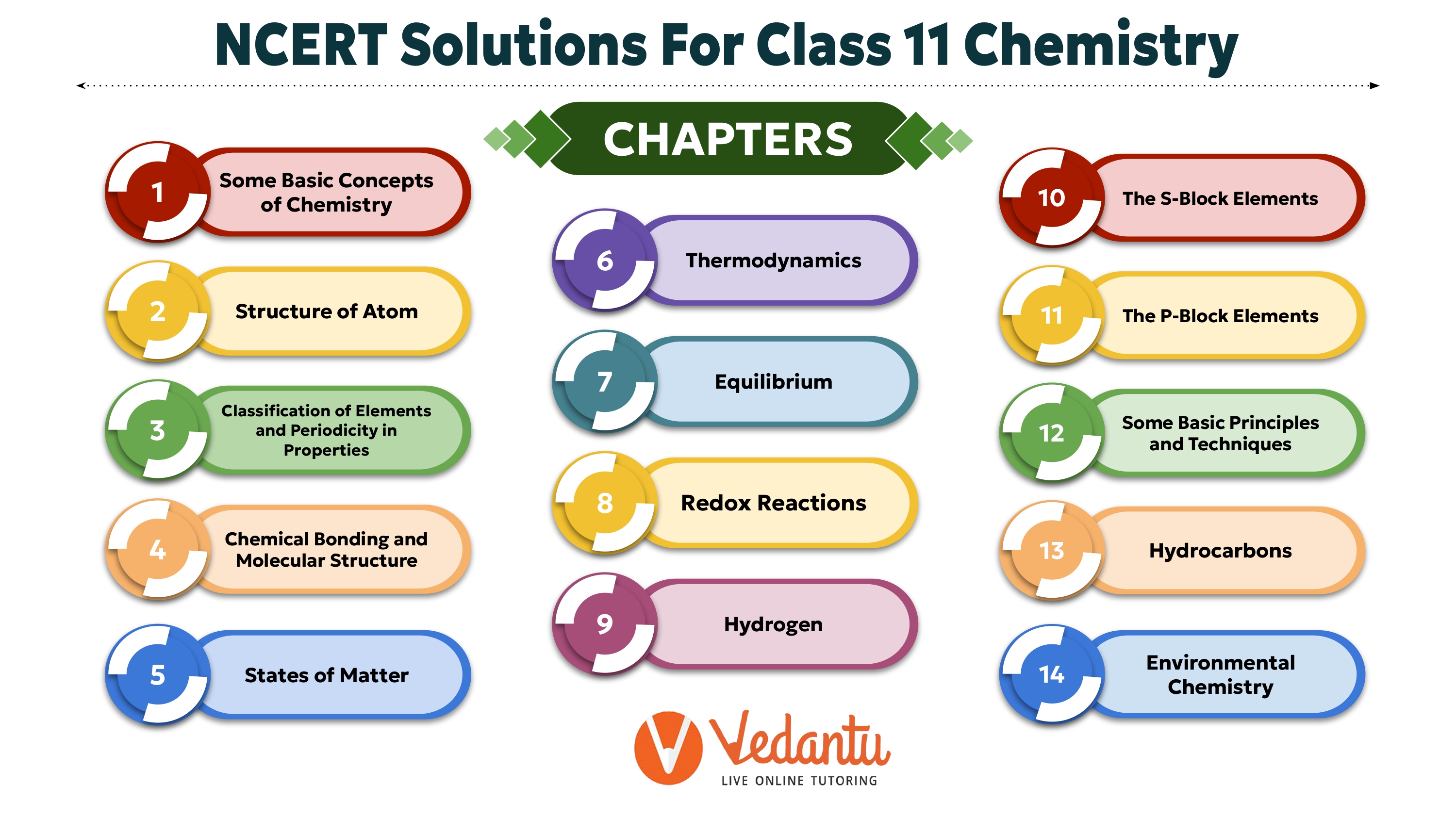NCERT Solutions Class 11 Chemistry - Chapter-wise FREE PDF Download



























FAQs on NCERT Solutions for Class 11 Chemistry
1. Is There any Payment Required for Downloading the NCERT Solutions of Class 11? If yes, then What is the Amount?
No, there is no payment required. You can access it totally free of cost. You just need to download the Vedantu App from where you can access these files.
2. I am a very Average Type of Student and Can’t Understand Both my School and Tuition Teachers' Teaching, can Anyhow Vedantu be Helpful for me?
We have a team of unique and best-ranked teachers from all across the nation, who are very friendly with their students and have achieved a high success rate through their lectures.
3. What are the topics in NCERT Class 11 chemistry Solutions?
There are 14 Chapters in NCERT Class 11 Chemistry solutions . The topics included in Class 11 Chemistry are Thermodynamics, States of Matter, Redox Reactions, Chemical Bonding, Equilibrium, and the basic concepts and principles of organic chemistry. These Topics are also important from the competitive examination point of view.
Students find Chemistry challenging to comprehend. However, Vedantu provides chapter-wise solutions that are easy to understand and cover a wide range of important topics to score high.
4. How can I download NCERT Chemistry Solutions?
Vedantu offers learning in a much simpler way. It provides chapter-wise solutions ensuring an easy understanding of the concepts. If you want to download the NCERT Solutions for Chemistry you can visit the page:
NCERT class 11 chemistry -Chapter wise PDFs
One of the advantages of referring to Vedantu Solutions is that you can refer to it online or download the chapter-wise solutions for free to refer to it in PDF format. These are easily accessible and are arranged in accordance with the guideline set forth by the CBSE Board.
5. How many Chapters are there in Chemistry Class 11?
In Class 11 Chemistry, there are 14 chapters. Some of the important chapters for the students to focus more on include Thermodynamics, States of Matter, Redox Reactions, Chemical Bonding, Equilibrium, and the basic concepts and principles of organic chemistry. These chapters hold a significant value when it comes to competitive exams also. The concepts are explained following the guideline set forth by the CBSE. Vedantu also provides the PDF of the solutions online and these PDFs are also available for free download.
6. How many books are there in NCERT class 11 chemistry?
There are two books for Class 11 Chemistry, Part I and II. You can download it for free from the official website of Vedantu or from the Vedantu app. Vedantu also offers the solutions to the chapter-wise exercises for Class 11 Chemistry. Vedantu also provides a free download of the PDFs of single chapters. This way you can only download the chapters that you want access to.
7. What are the important topics from the competitive point of view for chemistry NCERT class 11?
Chemistry NCERT class 11 topics or chapters that are important from the competitive point of view are, chemical bonding, equilibrium, redox reactions, the properties and reactions of the s and p block elements, and the basic principles and reactions involving the catalysts in organic chemistry. Vedantu offers live doubt clearing and explanation sessions for all the chapters. Chemistry NCERT class 11 also provide the complete study guide including the mock tests and important questions and their solutions.
8. What benefits do "NCERT Solutions class 11 chemistry" offer over traditional study methods?
"NCERT solutions class 11 chemistry" provide structured answers, detailed explanations, and step-by-step problem-solving techniques, fostering a deeper understanding of concepts and enhancing academic performance.
9. How can "NCERT class 11 chemistry" textbooks aid in exam preparation?
"NCERT class 11 chemistry" textbooks serve as a foundational resource, aligning closely with exam syllabi and offering clear explanations, diagrams, and examples, facilitating effective revision and exam readiness.
10. What makes "Class 11 chemistry NCERT solutions" indispensable for self-study?
"Class 11 chemistry NCERT solutions" offer a comprehensive review of textbook content, helping students clarify doubts, reinforce learning, and practice problem-solving independently, thereby promoting self-directed learning and academic autonomy.



